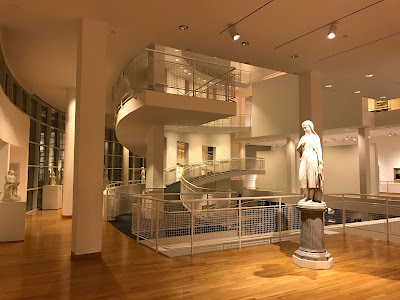Over the past few years living in Central Europe, I’ve been fortunate to explore the historic cities and towns here in Hungary a good bit with my family. We’ve discovered that there are a number of really spectacular gems of urbanism and architecture worth study.
Pécs, Hungary
Szeged, Hungary
Eger, Hungary
These places offer valuable lessons on how to build cities and towns that are not only charming and beautiful - but simultaneously provide superior environmental performance.
Here's a brief video explaining reasons why the designs of these historic cities and towns often perform so well environmentally, compared to contemporary suburban patterns:
Though many of these places started as Roman or medieval
settlements, most of them were greatly expanded and embellished relatively recently during Hungary’s
equivalent of the Belle Époque in the late 1800s when Austria-Hungary experienced a prolonged period of prosperity.
Below are Google Maps view links to some of our favorites places to visit.
Note: When you click on a link to explore an example in Google Maps, I recommend looking at the urban pattern from above, and also using the "Street View" function to drop down and explore the beautiful character of the streets and spaces from the ground.
Below are Google Maps view links to some of our favorites places to visit.
Note: When you click on a link to explore an example in Google Maps, I recommend looking at the urban pattern from above, and also using the "Street View" function to drop down and explore the beautiful character of the streets and spaces from the ground.
1. Budapest: [Click to Explore in Google Maps]
Budapest set the tone for architecture and urbanism in Hungary during the late 1800s. It’s grander in scale (4 to 6 stories tall) than the smaller cities and towns (usually 1 to 4 stories tall), but there are otherwise many similarities in the design language. The most common building type is a mixed-use, attached type that features a central courtyard with open galleries at each floor level. This building type facilitates a very efficient use of the land in a very pleasant low-rise format.
The architectural design of the façades usually reinforces the legibility of the urban structure while also giving each (otherwise relatively similar) building a unique and often very beautiful individual expression.
Budapest set the tone for architecture and urbanism in Hungary during the late 1800s. It’s grander in scale (4 to 6 stories tall) than the smaller cities and towns (usually 1 to 4 stories tall), but there are otherwise many similarities in the design language. The most common building type is a mixed-use, attached type that features a central courtyard with open galleries at each floor level. This building type facilitates a very efficient use of the land in a very pleasant low-rise format.
The architectural design of the façades usually reinforces the legibility of the urban structure while also giving each (otherwise relatively similar) building a unique and often very beautiful individual expression.
Next is a selection of smaller Hungarian cities and towns. I think the physical design of Hungary’s smaller cities and
towns provides really wonderful design inspiration, and there are many examples
of efficient use of mid-block areas frequently employing mid-block passages, or
mews, of various configurations.
I hope you find this brief tour helpful and enjoyable!



















































